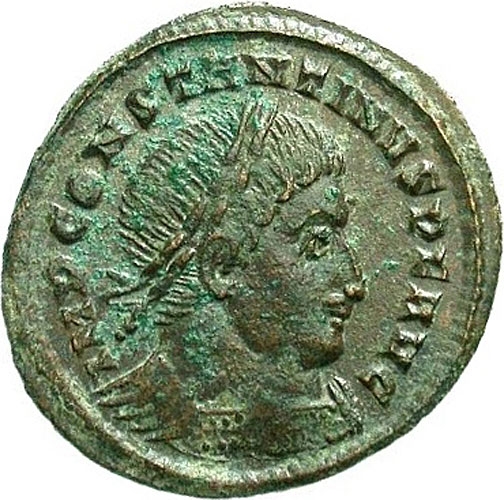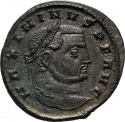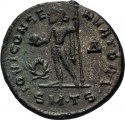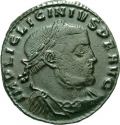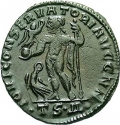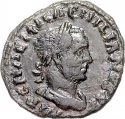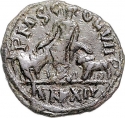You are about to finish your registration. Please check your mailbox (including spam folder). There should be a letter with a confirmation link. Check setting to make sure that your e-mail address is correct.
Send letter againDescription
Constantine the Great (Flavius Valerius Aurelius Constantinus Augustus), also known as Constantine I or Saint Constantine, was a Roman Emperor of Illyrian-Greek origin from 306 to 337 AD. He was the son of Flavius Valerius Constantius, a Roman Army officer, and his consort Helena. His father became Caesar, the deputy emperor in the west, in 293 AD. Constantine was sent east, where he rose through the ranks to become a military tribune under Emperors Diocletian and Galerius. In 305, Constantius raised himself to the rank of Augustus, senior western emperor, and Constantine was recalled west to campaign under his father in Britannia (Britain). Constantine was acclaimed as emperor by the army at Eboracum (modern-day York) after his father's death in 306 AD, and he emerged victorious in a series of civil wars against Emperors Maxentius and Licinius to become sole ruler of both west and east by 324 AD.
As emperor, Constantine enacted many administrative, financial, social, and military reforms to strengthen the empire. The government was restructured, and the civil and military authorities were separated. A new gold coin was introduced to combat inflation known as the solidus. It became the standard for Byzantine and European currencies for more than a thousand years.
Constantine was the first Roman emperor to convert to Christianity, and he played an influential role in the proclamation of the Edict of Milan in 313, which declared religious tolerance for Christianity in the Roman empire. In military matters, the Roman army was reorganised to consist of mobile field units and garrison soldiers capable of countering internal threats and barbarian invasions. Constantine pursued successful campaigns against the tribes on the Roman frontiers—the Franks, the Alamanni, the Goths, and the Sarmatians—even resettling territories abandoned by his predecessors during the Crisis of the Third Century.
The age of Constantine marked a distinct epoch in the history of the Roman Empire. He built a new imperial residence at Byzantium and renamed the city Constantinople after himself (the laudatory epithet of "New Rome" came later, and was never an official title).
Obverse

|
Constantine the Great, laureate, cuirassed bust right. IMP CONSTANTINVS P F AVG |
|---|---|
Reverse

|
Sol radiate standing left, chlamys across left shoulder, right hand raised, and holding globe in left. Star in the left field. SOLI INVI-C-TO COMITI |
| Edge | - |
